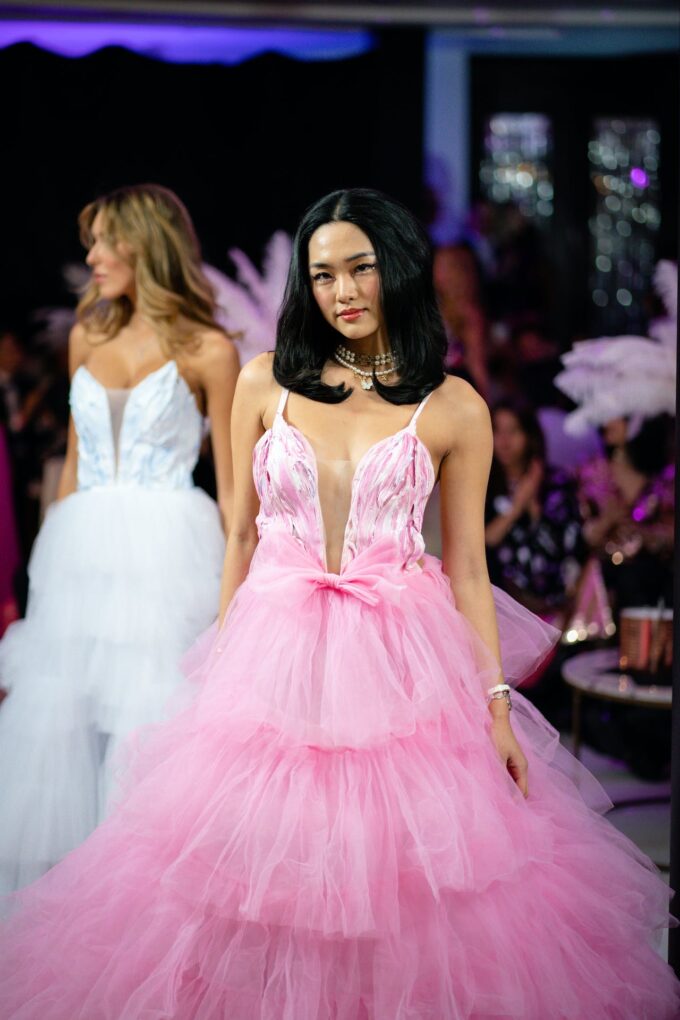
Fashion Week is more than just models strutting down the runway in designer clothing. Behind the scenes, a flurry of activity occurs before and during the show.
While the individual shows only last about 10 minutes, getting the clothes in front of you takes months of preparation and work from hundreds of people.
Designers
From the runway to backstage, fashion week requires precision ‘military-like’ planning and enormous preparation to get everything in sync. EDGE takes you behind the scenes for an insider’s look at the frantic activity, makeup and hair artists, models dressing, stylists reviewing and making changes, organizers in loud-pitched voices, and all the other players whose job is to implement a designer’s vision down the runway.
It’s not easy, and it’s undoubtedly not glamorous. Even designers like Diane Von Furstenberg, who watched a light rig fall and crash in front of the audience, can be flustered when the moment of truth arrives. This is where the absolute madness begins – organized madness, but still fever. From hemming skirts to ensuring slippery heels won’t ruin the look, fashion shows are a whirlwind.
Stylists
From a front-row seat, fashion shows seem like big, glamorous parties featuring gorgeous collections and stunning models. Behind the scenes, though, things can get messy and chaotic.
Fashion month is so hectic that many brands hire interns and volunteers to help them run their shows. While these roles don’t technically fall under the stylist category, they work closely together and help make each show successful.
Once the designers have finalized their looks, a team known as the Collection Coordinators will create mini boards (one for each eye) with the exact items of clothing and accessories that need to be worn. These are then given to the dressers backstage for reference during the show and after. Dressers will follow the board to dress each model in the whole outfit.
Publicists
While everyone focuses on the clothes that grace the runway, getting a show-up and running requires months of preparation. It’s no wonder that fashion brands are constantly seeking out interns and volunteers for their events.
The job involves clipboards, earpieces, and lots of meetings. Publicists, usually assigned to specific designers, must coordinate with editors backstage, communicate requests for VIP accommodations and green room interviews, and keep all of the press apprised of their schedules.
Stylists are typically hired in-house by the designer and often have their small team, with one leading stylist in charge of the rest. They work hand in hand with the designer long before fashion week to select every look – the shoes and jewelry.
Photographers
Fashion shows are glamorous and exciting but take much work to produce. The entire show can last just 12 minutes, but that doesn’t mean the models and backstage crew get to rest for a moment. Models are glued to their phones texting their agents, stylists are frantically buzzing around them, and publicists are barking requests left and right.
And all of that is on top of the actual designing, hair, and makeup work that goes into each outfit and the overall look. Then, the photographers have to capture it all while juggling other tasks and rushing from location to location. With fashion weeks popping up worldwide in addition to the original four, it’s no wonder that photographers need every bit of their equipment to get a good shot.
Production
From the front row, fashion shows look like a big, glamorous party with gorgeous collections and glorious crowds. But behind the curtains, it’s a different story.
While the designers and their studio teams spend months working on a collection, an army of people behind the scenes make it happen. Stylists, hair and makeup professionals, photographers, set designers, publicists, runners, and assistants work together to pull off a successful show.
The production team oversees model timings, music, and lighting. They are the ones who will run a seating chart (which can be a delicate task when two editors from rival publications are sitting together) and know the space best. It’s their job to ensure everything goes smoothly for the models and guests.














